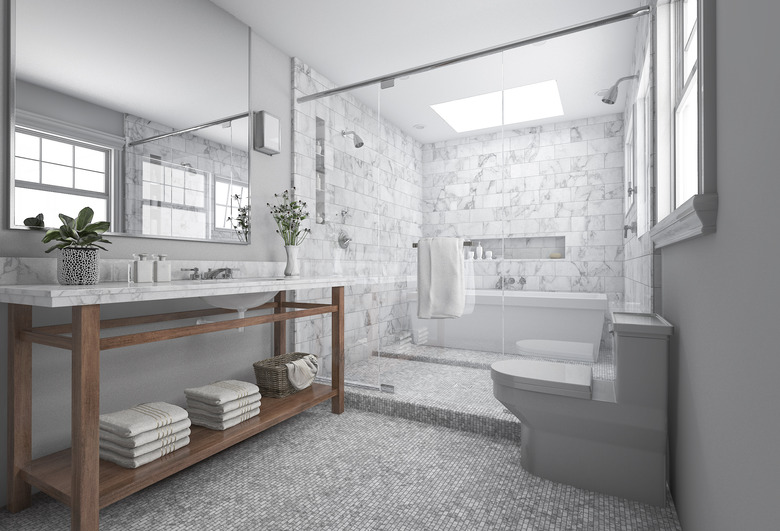How To Smooth Bathroom Walls After Removing Tile
We may receive a commission on purchases made from links.
If you recently removed tile from your bathroom wall as part of a renovation, you might be facing an unexpected challenge: smoothing the walls so that you can proceed with your project. Tile requires a great deal of sturdy adhesive to remain on your walls, and clumps of old thinset or grout may remain after you take the tiles down. In addition, damage from the removal process may seem glaringly apparent. Fortunately, with a bit of elbow grease and some basic tools, you can smooth your bathroom walls and prepare them for the next step.
Getting Started With Wall Repair
Getting Started With Wall Repair
It's helpful to know what adhesive was used on the tiles in your bathroom. This can offer insight into how you should proceed with the clean-up process. Many thinsets and mortars are very sturdy and will likely require a mastic remover and a power sander or the use of a very tough-grit sandpaper for thorough removal. If the tile was small or installed improperly, it is possible that other, less-coarse adhesives were used; in this case, a finer sandpaper might be appropriate.
Have a garbage bag handy to throw large chunks of dried thinset or adhesive away as you work. In addition, a damp rag and bucket for rewetting may be useful, enabling you to wipe away dust as you sand. This way, you can more easily gauge your progress.
Be sure that your workspace is well-ventilated and well-lit. If possible, use eye protection while smoothing your bathroom wall. You might also consider wearing a mask or respirator, particularly if you don't know whether there could be asbestos or other harmful materials in the walls or tiles that were disturbed during your renovation.
Smoothing Bathroom Walls
Smoothing Bathroom Walls
You can use a commercial mastic remover to dissolve the thinset or mortar that was used to adhere your tile to the wall. Follow package instructions carefully during the application. Chances are good that you will need to allow the remover solution sit on the wall for a period of time before you scrape it away with a putty knife.
In many cases, the mastic remover may not be enough to completely smooth your bathroom walls. Once they are dried, start with a medium-grit sandpaper and see whether that removes lingering roughness. If not, use a power sander and a rougher grit sandpaper. Wipe away dust as you go.
If there are divots or holes in the walls that you would like to repair, do so using a putty once the walls are otherwise smooth. Allow the putty to dry completely, then sand it off around the edges. Examine the bathroom walls in various levels of light and from all angles to ensure that they are as smooth as you would like. If they are not, you can choose to sand more. You can also opt to add a texturing paint, like orange peel texture, to the area you smoothed if you feel it does not match the other walls of the bathroom closely enough.
